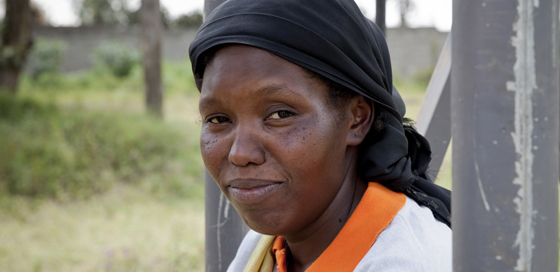Realizing the full potential of microbicides for women’s HIV prevention
By Robyn Dayton, Senior Technical Officer in Research Utilization and Kathleen Shears, Science Writer*
The need for better HIV prevention options for women has driven the search for a microbicide, a product that could be used to reduce the risk of HIV infection. Microbicides hold promise as a new method that women can control — or at least initiate —to protect themselves from HIV.
Progress in clinical trials suggests that an effective microbicide, which could be inserted in the vagina or rectum, may be within reach. But as we prepare for the eventual introduction of a microbicide, we must recognize that women will still face gender-related barriers to its use.
With support from the U.S. Agency for International Development, FHI 360 conducted two gender analyses — one in Kenya and another one with Sonke Gender Justice in South Africa — to identify these barriers and ways to address them. We reviewed microbicide studies, analyzed HIV and gender policies and population-level data, and interviewed key stakeholders. Results of the analysis were presented today at the International Conference on AIDS and Sexually Transmitted Infections in Africa. Notably, many of the barriers identified are not exclusive to microbicide use; they also apply to other areas of women’s sexual and reproductive health and can be addressed now.
Stakeholders in both countries thought that microbicides should be available to all women, not just those most at risk of HIV. Young women and married women are among those who would benefit most from microbicides, but they would be unlikely to use products that were stigmatized through an association with high-risk activities, such as sex work. Microbicides should also be available for free or at subsidized prices at a wide variety of health facilities, particularly those that women and youth already frequent.
The gender analysis also found that some women will want to talk with their partners about microbicide use, and others will not. Women have the right to make that decision and will benefit from a supportive environment in which to consider issues of sex and HIV prevention, including microbicide use. Women’s groups can support women as they weigh their options and learn from each other’s experiences. Health care providers should be equipped to provide counseling to women on whether and how to communicate with their male partners about microbicides.
For some women, experiencing intimate partner violence (IPV) may influence whether or not they talk with a partner about microbicide use. Given the prevalence of IPV, all providers of HIV and reproductive health services should be trained to screen clients for this risk and make appropriate referrals. More provider training and a stronger referral system to address IPV are critical.
Our findings suggest that microbicides could be marketed as products that improve couples’ sexual health, and not simply as an HIV prevention method. In South Africa and less so in Kenya, stakeholders said that explicitly mentioning the lubrication provided by a microbicide gel could foster acceptance and use of the product, while shifting the emphasis away from issues of trust in a relationship. Regardless of the message, microbicide promotion should be positive and rights based to help reduce the stigma often associated with HIV prevention.
We also found that men can play an important role in microbicide use by facilitating acceptance, access and consistent use. Care must be taken to protect women’s autonomy and ensure that men are involved in supportive — not controlling — ways. But educating men about microbicides can alleviate their concerns, and encouraging men to discuss sex and HIV protection can strengthen relationships and intimacy. Couples HIV testing and counseling offers an opportunity to promote healthy communication between partners.
Of course, microbicides alone will not transform gender norms. But research shows that microbicide programs that include strategies to reduce gender barriers have the potential to increase communication between partners, improve the quality of relationships and enhance women’s power to prevent HIV.
* Michele Lanham, Research Associate in Social and Behavioral Health Sciences and Rose Wilcher, Technical Advisor in Research Utilization, both with FHI 360, contributed to this blog.



